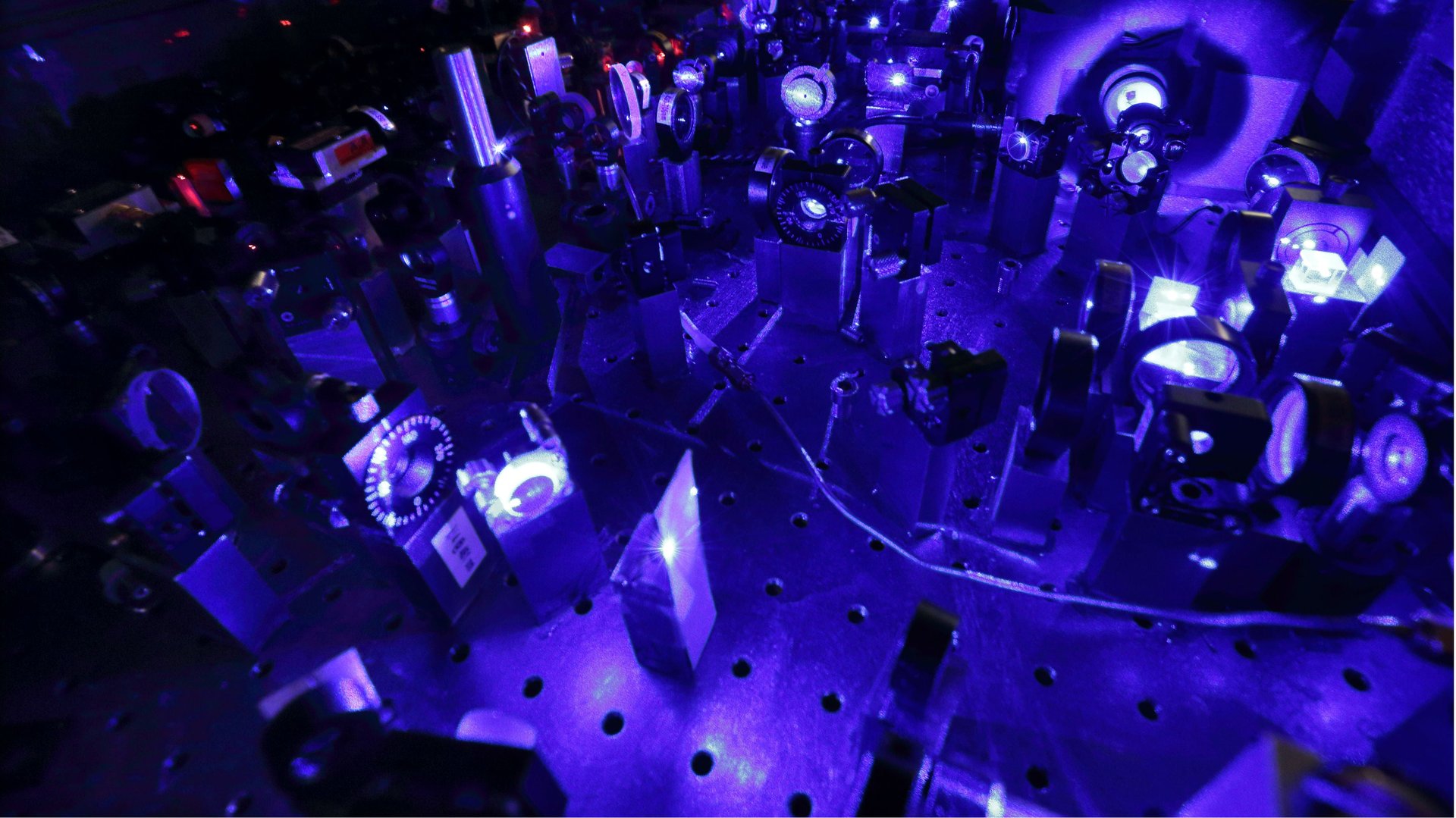Scientists just made the world’s best clock even better to test Einstein’s theory of relativity
All scientists like precision and accuracy, but the ones at the US National Institute of Standards and Technology (NIST) are even more particular than most.


All scientists like precision and accuracy, but the ones at the US National Institute of Standards and Technology (NIST) are even more particular than most.
On Nov. 28, researchers from NIST in Boulder, Colorado published work in Nature Photonics describing a timepiece that keeps time more reliably than any other clock—ever.
Generally, we think of a second as 1/60th of a minute (or the time it takes to say “one Mississippi”). But the scientific definition of a second is based on the number of times electrons jump back and forth between energy states around a cesium-133 atom (a particular isotope of the atom). In 1967, scientists at the General Conference on Weights and Measurements, an international group that approves these standards, used an atomic clock to define a second as “9,192,631,770 periods of the radiation” of a cesium-133 at absolute zero (a temperature defined as 0 K, or −273.15°C, which is as cold as materials can possibly get).
The atomic clocks that can measure time at this level of precision work by first exciting an atom with light waves (a process called optical pumping) to get its surrounding electrons oscillating. They then use a laser to monitor how these electrons are moving to keep time. This extra precise timekeeping can help physicists test different theories, but they’re also used to create technology we use every day—like precise GPS satellites that help us find our way around.
But atomic clocks are kind of like a crème brûlée that needs to be constantly watched and tweaked at all times. “The laser frequency kind of wanders around,” Ludlow says. This wandering creates “noise” that makes it harder to “hear” the actual atomic movement.
So far, it’s been impossible to eliminate this noise because the atoms used in the clocks can’t be measured all the time. When the laser frequency wanders, the atoms need to be cooled back down, and during this cooling period, scientists can’t track the atoms’ vibrations. They fondly refer to the time in which the atoms can’t be measured as “dead time.”
To eliminate dead time, scientists at NIST had the idea to sync two atomic clocks made with rows of the element yttrium, which can keep time by vibrating as consistently as cesium. These clocks could each be used separately, Ludlow explained, but when they’re put together, scientists can use lasers to measure the atoms in one while the other’s atoms are being manipulated in some other way. It’s like tending to your crème brûlée and a rib-eye roast simultaneously: While adding seasoning to one, the other can be brought up to the right temperature. You’re constantly working on one or the other, so that you end up finishing both dishes at the same time.
This marriage of the two clocks makes them much more stable, and therefore able to detect the tiniest differences in electron oscillation. Part of Einstein’s theory of relativity says that clocks behave differently when gravity is pulling on them. “[Einstein] predicted that clocks, when they’re ticking in environments with a gravitational field, tick slower,” says Ludlow. The farther away we are from a center of gravity (like the Earth’s core), the less its gravitational pull is on us; but the differences in these forces are so tiny, we don’t actually feel them—no matter where we are in the world. This new set of two atomic clocks is so stable and precise, though, it can accurately detect these differences at a point just a centimeter higher from the earth’s surface.
The current setup of these two clocks is too big to be moved from place to place—it’s larger than a single atomic clock, which can be as big as two refrigerators. But in theory, they could eventually be made portable. Ludlow believes that in addition to testing Einstein’s theory of relativity, they could be brought all over the world to check the Earth’s gravitational pull at different locations, and even sent into space to detect differences in the pull of other heavenly bodies. Eventually, they could be used to create more precise GPS systems and enable more rapid communication among satellites.